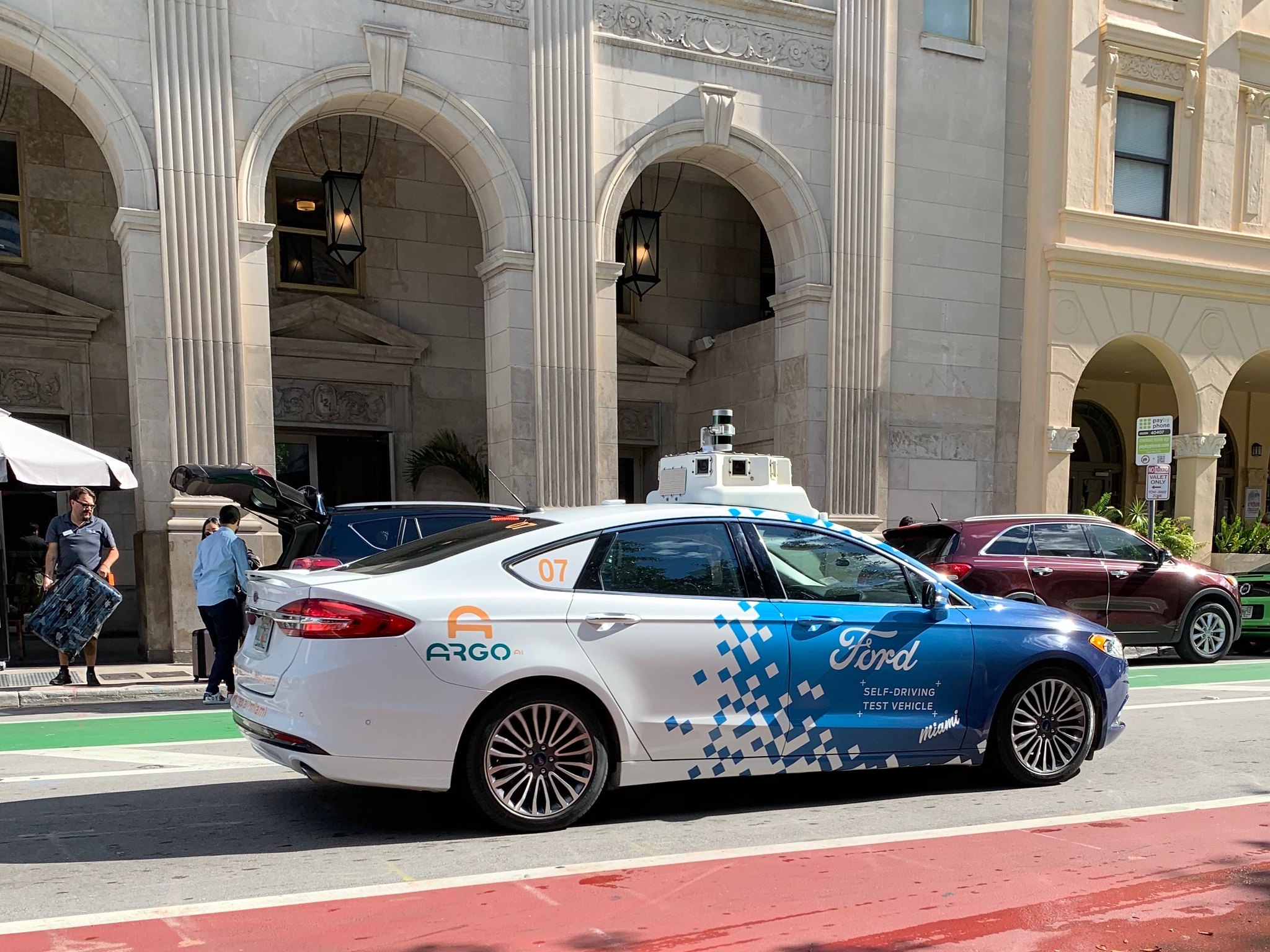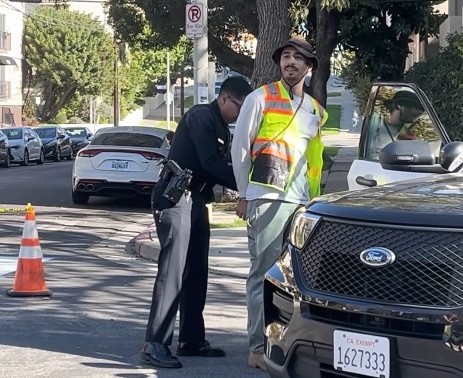This is the season climax, the culmination, the big reveal.
Previously on Parking? Lots!
Cities mandate off-street parking (guided only by junk science and groupthink). They do it in fear of territorial neighbors who want “their” curb spaces left alone. Our communities suffer horribly as a result. Information technology is shaking things up, though, and cities can now charge for curb spaces more easily. They can also share the proceeds with neighborhoods. Doing that breaks the vicious political circle that perpetuates parking quotas.
The final step -- here’s the reveal -- is so simple it’s anti-climactic. (Sorry.) Once they’ve metered the curb and bought off neighborhoods, cities can just ditch parking quotas: scratch them out and turn the page.
There’s never been a good policy reason for minimum parking requirements. Their political rationale -- preventing spillover parking -- disappears when street parking is no longer free. Then, developers can figure out for themselves how much car storage to provide, just as they decide how many dishwashers, light fixtures, and bay windows to install. The market, a spot market, emerges.
What’s not anti-climactic -- and what’s the focus of this episode -- is the encouraging degree to which cities are already taking this step. A few are reducing or outright scrapping off-street parking quotas, and many are writing exceptions to them.
Freeing Parking
The city of Seattle, for example, began its parking break in the 1990s, when it removed quotas at commercial buildings downtown. In the following decade, it began removing minimums in designated “urban centers” and “urban villages” -- the city’s most walkable districts. In 2011, the city removed quotas on multifamily buildings in these areas and in places close to frequent transit service; in practice, this exemption covers most parcels zoned to allow multifamily buildings.
Seattle has, for most purposes, ended off-street parking requirements for apartments and condominiums, though not for single-family houses or many other types of buildings. As a result, the number of parking spaces per new apartment has started trending steeply downward, as this graph by real-estate analysts Dupre+Scot shows. In the late 1990s, new apartments in central Seattle averaged 1.3 parking spots per unit, higher than ever before; buildings now under construction or in planning have fewer than 0.8, a return to the levels of the early 1960s.
Across Lake Washington, urbanizing Bellevue has been eliminating off-street quotas at new apartment and condo buildings too. Three-fourths of the city’s expected growth in multifamily housing will take place downtown and in other neighborhoods where Bellevue has erased or slashed requirements.
Many other Seattle-area cities allow developers modest reductions in parking requirements, in exchange for building near transit lines, providing tenants with transit passes, completing shared-parking agreements with nearby buildings, or offering parking to car-share vehicles or bicycles. Such provisions rarely lower overall requirements by more than 20 percent, but they are welcome steps.
Vancouver, BC, reduced its parking quotas near SkyTrain stations in 1996 and near transit routes with frequent service in 2005 (see page 11). Downtown, parking quotas are now minimal. In 2011, the regional governing body MetroVancouver instructed all its member municipalities to consider tempering parking minimums, especially in transit-rich areas.
Narrower reductions in parking requirements litter the law books of Vancouver-area cities: Nine cities reduce quotas in their denser neighborhoods. Seven allow less parking when developers make arrangements to share parking with neighboring parties. Four allow smaller quotas in exchange for on-site car-share vehicles, dedicated car-share parking, or bike parking. As in the Seattle area, the reductions from these provisions rarely exceed 20 percent, but they are positive signs nonetheless.
Almost a decade ago, Portland exempted apartment and condo buildings close to transit from parking quotas -- some 38 percent of parcels in the city, concentrated in and around downtown. Unfortunately, Portland has since reinstituted parking quotas on multifamily buildings, though they are blessedly small.
Spot Market Rewards
What’s happening as a result of the parking breaks these cities have enacted is exactly what you’d expect: developers are installing parking spaces in proportion to costs and demand. UCLA planning professor Donald Shoup describes what happened in Portland.
Between 2006 and 2012, Portland developers who were exempt from parking requirements built 122 apartment buildings with 3,937 apartment units and 2,352 parking spaces. Developers built no off-street parking for 45 percent of these new buildings, and for the other 55 percent built an average of only 0.9 parking spaces per apartment.
Likewise, in close-in Seattle neighborhoods where an enormous wave of residential construction is rolling ahead, some developers are installing no parking, but most are installing some. The recent average is 0.75 stalls per dwelling in multi-family buildings.
One thing that most Seattle developers have stopped doing is bundling parking into the price of their units. They’re selling parking separately. In central Seattle, according to Dupre+Scot, the share of multifamily dwellings (both new and old) where parking is “unbundled” shot up from 40 percent to 50 percent in the half year ending in March 2013. The price of parking in these unbundled spots has been rising quickly, as the market sops up the long-accumulating backlog of mandatory spaces.
In other areas with minimal off-street quotas, such as downtown Bellevue and central Vancouver, BC, unbundling has also become common. Wherever parking quotas stand, though, developers continue to bundle parking with apartments. They have little choice; unbundled parking cannot pay for itself where quotas flood the market.
Cash Rewards
Emancipating parking can unleash not only unbundling but a torrent of other gifts. It encourages those who own parking at buildings of all types to charge for it. Pay parking shifts the cost of car storage onto its users, and off of everyone else. Repeat: and off of everyone else. At present, in the United States, parkers only pay 4 percent of the cost of parking at the time of use.
When parkers pay for what they use, those who currently pick up the tab get to keep their money. That means rewards for huge swaths of society: more-affordable rents; bigger profits for companies; healthier budgets for schools, community centers, and other public agencies; and better deals at shops and stores that are no longer subsidizing customer parking.
The annual value of subsidies to U.S. off-street parking was between 1.2 and 3.7 percent of gross domestic product in the 1990s when UC Davis researcher Mark DeLucchi completed the best-ever estimate of it (see page 207). Assuming the middle of that range and current GDP, that’s a subsidy of about $1,250 per person. Freeing parking will start returning that money to its rightful owners.
Pooling, Sharing, Alternatives
At any time at any off-street parking facility with assigned spaces, a share of regular users will be absent and their spaces empty. Even in the middle of the night, apartment buildings’ parking is typically almost one third empty. By pooling parking, and renting out the excess to neighbors, those extra spaces can become income.
Freeing cities from parking quotas also stimulates sharing. Office buildings, which need daytime parking, can partner with condo towers, which need nighttime parking. Stores (daytime) and theaters (evening) can team up; as can schools (weekdays) and churches (weekends). Some localities write elaborate provisions in their parking regulations to give builders partial credit for such arrangements, but unleashing the spot market is the best way to facilitate them. When Los Angeles exempted renovations of downtown historic buildings from parking quotas, half of the parking places that developers offered to their new tenants were off-site, in existing lots and garages with excess capacity.
The ripple effects of parking emancipation extend further still. When parking becomes a pay-per-use commodity, it shifts the economics of countless travel choices. When parking is free -- because mandatory -- you can never save on parking by carpooling, riding transit, or visiting online. But when parking has a price, you have new opportunities to save money every day. The full cost of parking exceeds the cost of fueling and maintaining motor vehicles. As these costs transfer from society to parkers, driving will become more expensive, and other things will get cheaper. Imagine how much driving would diminish if the price of fuel and maintenance doubled. That’s what a spot market will do.
Backing Out of Parking
A parking market raises the price of driving (especially driving alone), which will reduce driving (especially alone) and, with it, air pollution, noise pollution, water pollution, emissions of greenhouse gases, traffic congestion, crashes, and consumption of oil (and the spills, pollution, and military entanglements that oil dependence entails). It will boost not only carpooling but also car-sharing and ride-sharing. The emerging parking markets in central Portland, Seattle, and Vancouver, BC, are one reason services like Zipcar, Car2Go, Getaround, RelayRides, taxis, for-hire cars, Uber, UberX, Lyft, and Sidecar are thriving in these zones, helping to make car-lite lifestyles commonplace there.
Similarly, a spot market boosts transit ridership, which makes transit more cost effective, which allows more-frequent service, which further raises ridership. By encouraging people to bike and walk more, it makes cycling and walking safer, because for these modes, safety lies in numbers. For all of these reasons, striking parking mandates from local law books dampens car ownership. It’s no coincidence that the number of motor vehicles per capita in Cascadia’s free-market parking zones -- central Portland, Seattle, and Vancouver, BC -- is trending downward. In central Vancouver, more than a quarter of households are car-free.
Eliminating parking quotas doesn’t just change travel behavior, it helps fix our cities. It allows developers to build no-parking apartments and condominiums, which are dramatically less expensive, and to build more residences in general, tempering rents overall and easing sprawl. It also stops parking rules from producing ugly buildings and chopped-up neighborhoods.
Best of all, these changes reinforce each other in a virtuous circle that helps to nurture the kinds of vibrant, affordable, compact, safe, walkable, transit-rich, bike-friendly, low-carbon communities that the planet desperately needs and a growing share of citizens want to live in.
Beyond Downtowns
So far, parking breaks are concentrated in central areas of Cascadia’s biggest cities along with a few other cities elsewhere, such as Denver, Philadelphia, and Washington, DC.
What’s impressive politically is that these cities have slashed or eliminated quotas without first perfecting performance pricing for curb spaces or sharing curb-parking revenue with neighbors -- the first two steps in Donald Shoup’s plan of action. They’ve freed parking by sheer political courage.
Think what cities can do after they defang their opponents by staking neighbors into curb-parking revenue. When neighbors -- even a subset of them -- start coveting local-improvement funds for their parking benefit districts, or bigger returns on the sale of their curb-parking permits, they will stop pushing for parking quotas and start pushing against them. When that happens, our communities will be free to quit mandating parking at all. We will be able to just clean them out of our law books: delete them, deep six them, kibosh them, erase them.
And then, finally, we will be free of the plague of parking quotas that has infected us for decades.











